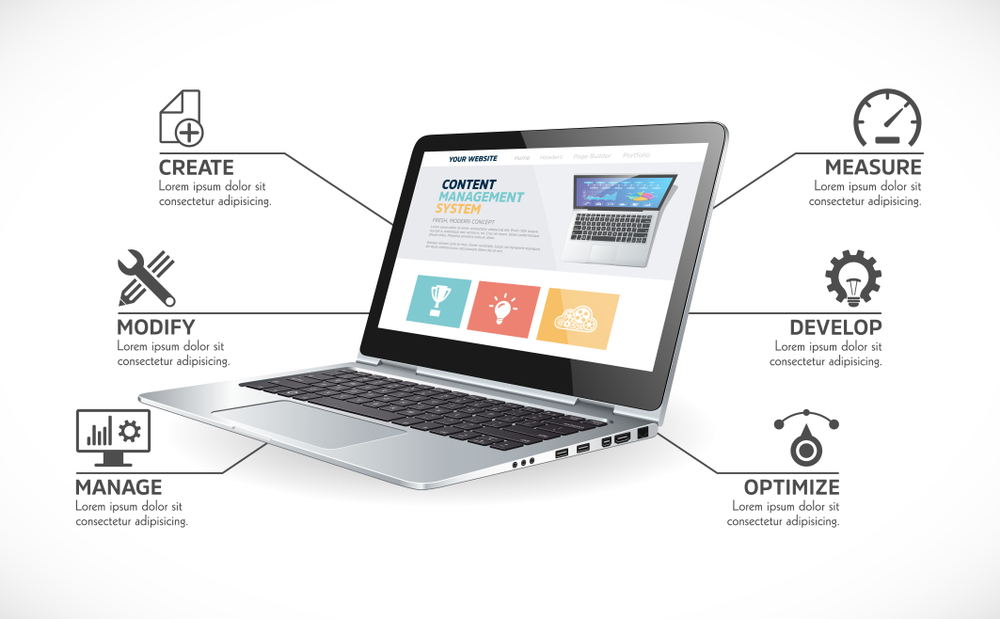
Creating a custom website involves careful planning and consideration of various factors to ensure it meets the needs of your business or project. Here are some essential features that every custom website should have:
A Short, Memorable URL:
Simple URLs are easy to remember. If your business is new and doesn’t already have a website, you may be eager to get one up and running as soon as possible. But before you choose a URL, make sure you do your homework and think things through. Consider your company’s objectives and choose an attention-grabbing slogan. Here are some rules: The URL should be easy for people to remember and put into their browser’s address bar. In other words, it should be simple. Also, as a general rule, you should use.com or.org web names whenever possible. Search engines and users alike think these are more reliable.
Detailing Your Company in Simple Words:
If people find your website by accident, you need to make a good first impression and clarify why your website exists. What are you doing here? You should have a goal statement or hero message on your homepage that tells people what your business does.
Call to Action:

Developing a website is beneficial. It’s better to get people to that page. Of course, what really counts in the long run is turning those visitors into buyers or leads. That can only be done if you are clear about what you want them to do when they get to your page. To do that, they might have to buy something, fill out a contact form, or even sign up for a magazine. Tell people what you want them to do by using well-thought-out “calls to action.”
Responsive Design:
Ensure your website is accessible and user-friendly across devices, including desktops, tablets, and smartphones. A responsive design adapts to different screen sizes, providing a consistent and enjoyable user experience.
Intuitive Navigation:
Design a clear and intuitive navigation structure that allows users to easily find the information they are looking for. Use logical menu labels and organize content in a way that makes sense to your target audience.
Fast Loading Speed:
Optimize your website’s performance to load quickly. Users tend to abandon slow-loading sites, impacting the user experience and search engine rankings. Compress images, leverage browser caching, and minimize HTTP requests to enhance loading speed.
Search Functionality:
Implement a robust search feature to help users quickly locate specific content. This is particularly important for websites with a large amount of information or products.
Security Measures:

Prioritize the security of your website and user data. Utilize HTTPS protocols, secure socket layer (SSL) certificates, and regularly update security plugins. Protect against common vulnerabilities and conduct regular security audits.
Contact Information and Forms:
Make it easy for users to get in touch with you. Include clear contact information and, if applicable, user-friendly contact forms. Ensure that form submissions are secure and that users receive confirmation messages.
High-Quality Content:
Create and maintain high-quality, relevant content that engages your audience. Regularly update information, blog posts, and any other relevant material to keep the website current and encourage repeat visits.
Social Media Integration:
Integrate social media buttons and share options to expand your online presence. This allows users to easily share your content and enhances the overall visibility of your website.
Analytics and Tracking:
Implement analytics tools such as Google Analytics to track user behavior, monitor website performance, and gather insights. Use this data to make informed decisions and optimize your website for a better user experience.
Content Management System (CMS):

Choose a reliable CMS that suits your needs, allowing you to update and manage content efficiently. Popular choices include WordPress, Joomla, and Drupal.
Cross-Browser Compatibility:
Ensure that your website functions correctly on various web browsers (e.g., Chrome, Firefox, Safari, and Edge). This helps maintain a consistent experience for users, regardless of their browser preferences.
Scalability:
Design your website with future growth in mind. Choose a scalable architecture and infrastructure that can accommodate increased traffic, additional content, and new features as your business expands.
Accessibility Compliance:
Ensure your website complies with accessibility standards (e.g., WCAG) to make it usable for people with disabilities. This includes providing alternative text for images, ensuring proper color contrast, and implementing keyboard navigation.
Backup and Recovery:
Regularly back up your website to prevent data loss in case of unexpected events. Have a reliable recovery plan in place to quickly restore your site in case of any issues.
Legal Compliance:
Adhere to legal requirements, including privacy policies, terms of service, and any industry-specific regulations. Display clear disclaimers and obtain user consent when collecting personal information.
Photos and bios of staff:
People are interested in more than just what you do. They need to know your name. You should sell yourself on your website, and in this world of machines, people want to connect with real people. People also feel more trusting when they see a person’s credentials. This is something everyone wants when they are exchanging money.
Conclusion:
By incorporating these essential features into your custom website, you can create a robust online presence that delivers a positive user experience and supports your business objectives.


